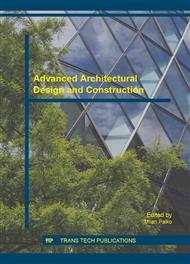p.293
p.299
p.305
p.313
p.320
p.326
p.332
p.338
p.345
The Impact of Relative Position of the High-Rise Buildings on the Wind Flow
Abstract:
The Venturi effect has been defined as the increase in fluid speed or flow rate due to a decrease of the flow section. In the present paper the wind speed conditions in passages between triangular buildings with different distances are studied with Computational Fluid Dynamics (CFD) to investigate the extent to which the Venturi effect is present in the passages. In this paper are considered eight different variants of relative positions of the two high-rise buildings. The variable is a distance between towers. They are investigated maximum wind velocities and the point at which the maximum velocity occurs for each from these variants.
Info:
Periodical:
Pages:
320-325
Citation:
Online since:
January 2016
Authors:
Keywords:
Price:
Сopyright:
© 2016 Trans Tech Publications Ltd. All Rights Reserved
Share:
Citation:


